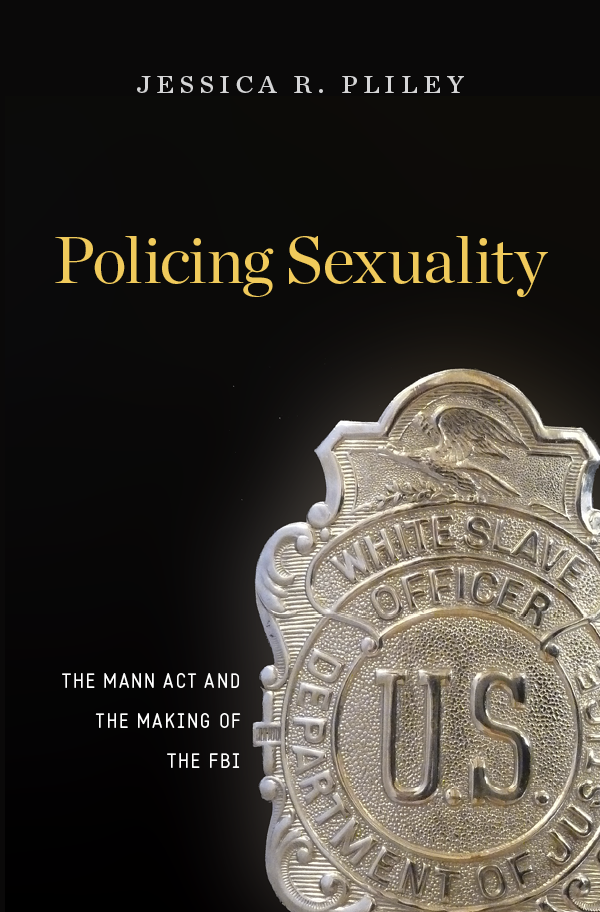On February 12, 1934, Lulu Wood left her home on the outskirts of Monroe, MI to discover the body of a young woman whose head had been brutally bashed in at the bottom of a ditch. Lulu ran home and called the police, who quickly identified the remains as 26-year-old Ethel Norris. Newspaper coverage of the case prompted several street-walking prostitutes to approach the Toledo police. Each gave a similar statement: a man by the name of “Toledo Tommy” (a.k.a. Harry Calvin Barnett) in an old Willy-Knight sedan had picked them up for a “date”; he had then driven them out to the country-side where he raped them and left them by the side of the road. Faced with multiple reports of kidnapping and assault, police in Monroe and Toledo wondered if they might have a serial rapist who had escalated to murder on their hands.
When police took Barnett in for questioning, he admitted to picking up Ethel and paying her for sex, but he maintained that he dropped her off near Temperance, MI. Monroe and Toledo police were firmly convinced that Harry had murdered Ethel, but their evidence remained largely circumstantial, and Michigan courts dismissed the murder charge in May 1934. Frustrated, local police contacted the Federal Bureau of Investigation to urge prosecution under the Mann Act. The 1910 Mann Act offered sex workers and police a tool to use against abusive and violent johns like Harry Barnett because it outlawed the transport, or inducement of transport, over state lines of women and girls for the purposes of prostitution, debauchery, or “any other immoral purpose.”

Congress passed the Mann Act in 1910 in response to a growing outcry against what was then called white slavery. Americans encountered a near-constant stream of stories of sex slavery in the early-twentieth century, as white slavery provided rich material for the imaginations of playwrights, filmmakers, and journalists. Americans were warned that young white women were being preyed upon by slick men who might lure, coerce, and trick girls into America’s semi-public brothels, where they would be forced into sexually service for the profit of pimps and madams. According to most stories, young, white girls faced an array of dangers that would leave them entrapped in brothels where they would be exploited by “human vultures who fatten on the shame of innocent young girls.”
The first decades of the twentieth century witnessed jarring social shifts that fed into the salience of white slavery stories. Large numbers of young women of all classes entered the wage labor market, and a consumer recreational culture that offered America’s youth, and especially its girls, new opportunities for romantic and sexual adventure in the morally suspicious spaces of the café, the amusement park, and the darkened movie theater where they fraternized with who knows whom. At the same time, record-level immigration to the United States was paired with rural to urban migration and the migration of increasing numbers of African Americans moving north to escape the humiliation, privation, and segregation of the Jim Crow South. These (im)migration streams changed the complexion of America’s most populous cities, while provoking nativist fears about intermarriage and the fate of the ‘Mayflower’ stock. The sensational white slavery stories expressed a host of entangled anxieties about life at the turn of the century.
These stories helped to incite demands for state action to protect these young, white women. Congress passed the White Slave Traffic Act, called the Mann Act after its Congressional sponsor James R. Mann. Enforced by the Bureau of Investigation, renamed the Federal Bureau of Investigation in 1935, the Mann Act was America’s first federal anti-sex trafficking law. Throughout the 1920s and into the 1930s, the Bureau investigated thousands of Mann Act cases from run-of-the-mill interstate prostitution cases, to cases involving run-away wives or daughters, to cases of organized sex trafficking. For the feds to get involved in an investigation the only requirements were: 1. An immoral (read: sexual) act; and, 2. A state boundary crossed.
With these requirements in mind, Monroe and Toledo police called up the Bureau of Investigation and invited them to join in building a case against Barnett. The Bureau’s special agents started by interviewing Billie Briggs, who had filed a police report after her attack in September 1933. Billie, while walking down the street in Toledo, had been approached by a man in a car. Calling himself “Toledo Tommy”, he invited her to a roadhouse outside of town, where he promised to buy her drinks and pay her five dollars if she would join him as his date. They headed out of town and after crossing the state border he pulled the car off the road in the middle of dark countryside. Barrett, then, pulled out a pistol and threatened to “blow her brains out” if she didn’t have sex with him. He demanded acts of “perversion”—probably oral sex but possibly anal sex. After the assault, she managed to get out of the car. Billie walked the seven miles back to Toledo and reported the incident to the police who identified “Toledo Tommy” as Barnett. But, they never arrested him for raping Billie because she was a well-known prostitute.
After the murder of Ethel Norris, six other “professional prostitutes of Toledo” came to the police and told remarkably similar stories. In each case, Barnett “cruised the streets of Toledo in his automobile and invited each girl who was street walking at the time to get in for a ride,” he would then abduct them over a state boundary, rape them while brandishing a gun, and abandon them in the countryside of Temperance or Monroe. He picked up Dorothy Reynolds, Elsie Morton, Helen Lechlak, Pat Taylor, Ina Black, and Dixie Thornton off the streets of Toledo. On the basis of these accounts the Bureau launched a Mann Act investigation.
With a wealth of evidence, the judge handling the six indictments found Harry Calvin Barnett guilty of transporting Lechlak, Taylor, Black, and Reynolds in violation of the Mann Act. He was sentenced to serve the maximum sentence, an overall prison term of twenty years for his predation of prostitutes. The “any other immoral purpose” clause opened the possibility that the Mann Act could be used to police sexual predators and in doing so empowered the sex workers in this case to name their assailant and gain some semblance of justice. It also protected the street walkers of Toledo from the hands of what the consulting psychiatrist on the case called “a very morbid and dangerous type of personality.”
Historians of the FBI and the Mann Act, including myself, often frame the Bureau’s use of this law as evidence of the many ways that the FBI and American state upheld heteronormative ideals of a husband who brought home the ‘bacon’ and a wife who cared for the home and children. My book illustrates the ways that the FBI used the Mann Act to police women’s sexuality and mobility, which it certainly did. But this analysis sometimes overlooks the ways in which this law provided federal law enforcement a tool for prosecuting criminals: men like Barnett who raped and then used multiple jurisdictions as cover; men who maimed and murdered women and then fled; men who took advantage of sex workers’ vulnerabilities. Though this particular case didn’t change the outcome for the reportedly vivacious Ethel Norris, it did afford a degree of justice for the survivors of his attacks, and took “Toledo Tommy” off the streets for 20 years. The investigating special agent admitted several years later, “the reason charges were pressed of vehemently against this man was that he had murdered a prostitute in Monroe County, Michigan, which charge had never been proven against him though beyond question he was guilty.”
 Jessica Pliley is an Associate Professor of History at Texas State University. She is the author of Policing Sexuality: The Mann Act and the Making of the FBI (Harvard, 2014) and a co-editor of Global Antivice Activism, 1890-1950: Fighting Drink, Drugs and ‘Immorality’ (Cambridge, 2016). She is currently working on a book about the international anti-trafficking movement.
Jessica Pliley is an Associate Professor of History at Texas State University. She is the author of Policing Sexuality: The Mann Act and the Making of the FBI (Harvard, 2014) and a co-editor of Global Antivice Activism, 1890-1950: Fighting Drink, Drugs and ‘Immorality’ (Cambridge, 2016). She is currently working on a book about the international anti-trafficking movement.

NOTCHES: (re)marks on the history of sexuality is licensed under a Creative Commons Attribution-NonCommercial-NoDerivatives 4.0 International License.
Based on a work at www.notchesblog.com.
For permission to publish any NOTCHES post in whole or in part please contact the editors at NotchesBlog@gmail.com




